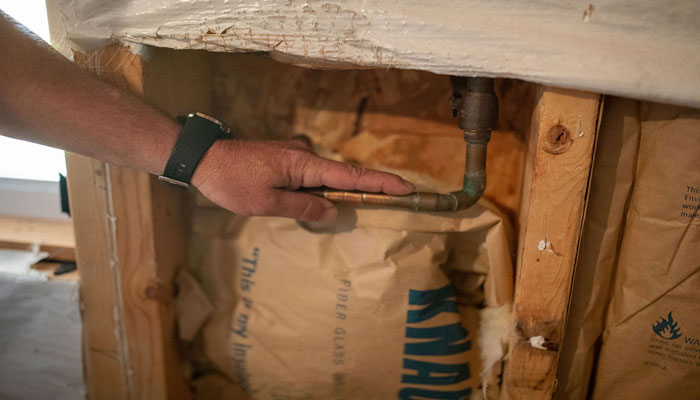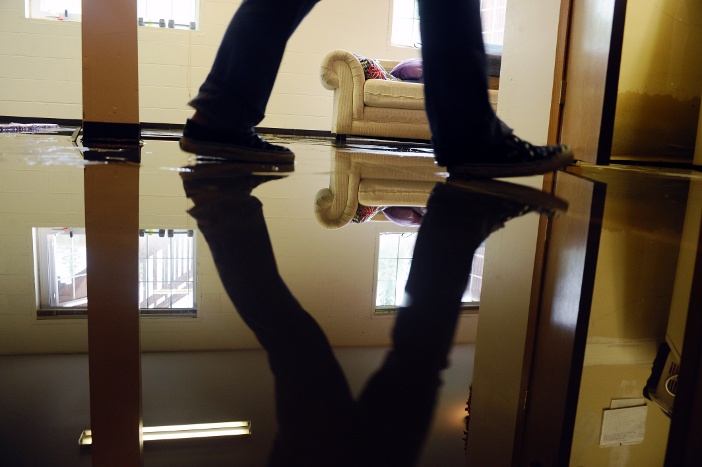Identifying and Quickly Fixing a Leaking Pipe: Step-by-Step
Identifying and Quickly Fixing a Leaking Pipe: Step-by-Step
Blog Article
Right here down the page you'll find lots of very good information and facts on the subject of How to install a dishwasher safely.

A burst pipeline is a major emergency; you can only stand as you see water you pay dearly to rejoin with the planet. In even worse instances, you discover a swimming pool on your kitchen area floor, which is a terrific journey risk, specifically if you have kids around. If the pipeline that ruptured was in your wall surfaces, bad news: you might need to paint that entire section.
Just how can a disaster like a ruptured pipeline be avoided and also managed? Well, by listening to your professional emergency plumbing professionals and complying with these regulations.
How do I understand when my pipelines have burst?
Changing water stress
Pipes do not simply burst in a day. You might have seen that your kitchen area faucet or shower doesn't run promptly when you turn the faucet. It might stop for a few secs and afterwards blast you with even more force than normal.
In other circumstances, the water may seem normal at first, then drop in pressure after a few secs.
Damp walls as well as water stains
Prior to a pipe bursts, it will leakage, many times. If this relentless dripping goes undetected, the leakage may finish into a vast laceration in your pipeline. One very easy way to avoid this emergency is to keep an eye out for wet wall surfaces advertisement water stains. These water spots will certainly lead you right to the leak.
Puddles under pipes as well as sinks
When a pipeline bursts, the discharge forms a puddle. It may show up that the pool is expanding in dimension, and no matter the amount of times you wipe the pool, in a few minutes, there's one more one waiting to be cleaned up. Commonly, you might not have the ability to map the pool to any type of visible pipelines. This is an indication to call a specialist plumber.
Untraceable trickling sounds
Pipeline ruptureds can happen in the most unpleasant locations, like within concrete, inside walls, or under sinks. When your home goes quiet, you might have the ability to hear an irritatingly consistent trickling sound. Even after you have actually examined your shower head as well as kitchen tap, the trickling might continue.
Beloved viewers, the trickling might be coming from a pipe inside your wall surfaces. There isn't much you can do about that, other than tell an expert plumber.
Turn off the Water
When water ices up, it increases in volume by about 9 percent. And also it broadens with significant force: The pressure inside pipelines may go from 40 pounds per square inch to 40,000 psi! No pipeline can hold that much pressure, so it bursts. The break might occur where the ice forms, yet more frequently, it occurs where water stress discovers a weak spot in the pipeline. That may be inches or perhaps feet from the icy area. Find the water shutoff valve as well as turn off the water to stop more damages. You may also require to shut off the electricity too, depending upon where the leakages happens and exactly how big it is.
Polluted water
Many people think a ruptured pipe is a one-way outlet. Fairly the contrary. As water drains of the hole or gouge in your plumbing system, contaminants locate their way in.
Your water might be polluted from the source, so if you can, examine if your water container has any type of problems. Nonetheless, if your drinking water is provided as well as purified by the local government, you ought to call your plumber immediately if you see or scent anything funny in your water.
What do I do when I spot a ruptured pipe?
Your water meter will certainly continue to run also while your water wastes. To lessen your losses, find the main controls as well as transform the supply off. The water mains are an above-ground structure at the edge of your building.
How to Fix & Detect a Leaking Pipe
How Do I Know if a Pipe is Leaking?
Leak detection tests can help you determine if your pipe has a leak. Even if you don’t see an apparent leak, you should still conduct leak detection tests regularly to save water and money—and prevent major damage to your home.
Water meter. It can be helpful to figure out what your usual water meter usage numbers are and then monitor them regularly. To monitor your meter, first, turn off all water faucets in your home. Check the meter and write down the numbers. In a few hours, check the meter again. If the numbers have changed, you have a leak. Water gauge. Use a water gauge to test your water pressure. Your showerhead should produce a certain amount of water pressure based on its model and design. If the pressure is lower than it is supposed to be for that specific showerhead, your home likely has a leak. Puddles. Look inside your bathroom, laundry, and kitchen sink cabinets. Puddles around the cabinets or around toilets, tubs, showers, and washing machines indicate the presence of a leaking pipe. You may also notice loose tiles, peeling or flaking paint, or mold caused by water accumulation. Napkin test. Even if you don’t see any puddles, you may still have a leak. You can test for water leaks in the bathroom, laundry, and kitchen by wiping below-sink connections with a napkin, paper towel, or piece of toilet paper. If it becomes damp, you probably have a leaking pipe under the sink. Discolored walls. Walls that are discolored—usually with brown or yellow stains—or bulging might mean that they have been impacted by water damage caused by a leaking pipe. Smell. A leaky pipe will create sitting water, and over time, that water may develop a musty smell. If your home smells musty, but you can’t locate the source, it may be due to a leak. Steps for Fixing a Leaking Pipe
A leaky drain can be remedied by tightening the pipe base, replacing the drain seal, caulking the rim, and tightening the pipe nut. Similarly, a leaking toilet pipe can be treated by tightening the packing nut. You may also need to replace the valve. A leaky faucet may just need tightening or replacement of the washers. If that doesn’t work, consider replacing your faucet. If your pipe has a hole in it, you may want to use a pipe leak sealer or pipe leak tape. This quick fix for water pipe leaks can also temporarily fix a copper pipe leak. https://www.ahs.com/home-matters/quick-tips/how-to-tell-if-pipes-are-leaking/

Hopefully you enjoyed reading our section on How to install a dishwasher safely. Many thanks for taking time to read our article post. Enjoyed reading our blog entry? Please share it. Help other people locate it. I appreciate reading our article about What to Know Before Installing a Dishwasher.
Tap leaking? Call us. Report this page